Top 10 hardy plants for winter interest
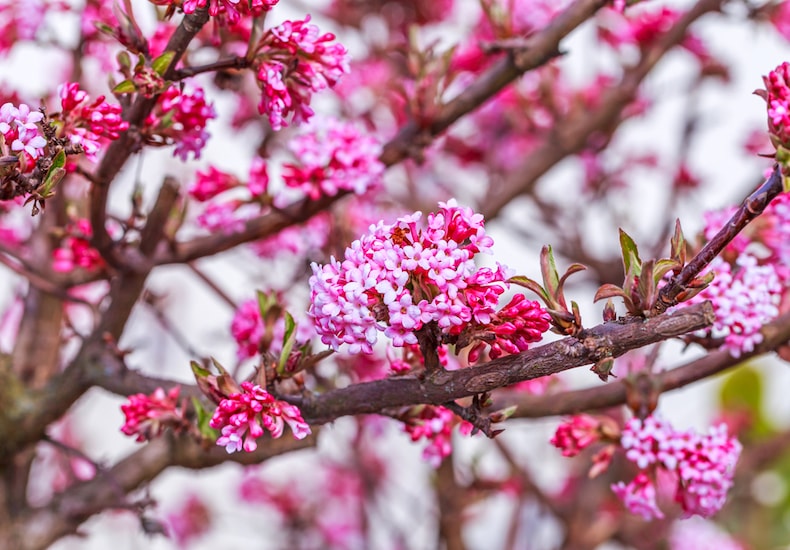
During the winter, Viburnum x bodnantense 'Dawn' bursts into life with a gorgeous show of pink flowers
Image: Viburnum x bodnantense 'Dawn' from Thompson & Morgan
Winter needn't mean naked branches and a bare, uninviting garden. Plenty of plants are at their peak throughout the colder months and, with a little planning, you can easily incorporate brightly coloured stems, intriguing fruits and fragrant blooms. Throw some evergreen trees and shrubs into the mix for added structure and create your dream winter garden that glories in all year round interest.
We asked our horticultural expert, Sue Sanderson, to share her favourite winter plants. Here's what she said:
- Chimonanthus praecox
- Viburnum x bodnantense ‘Charles Lamont’
- Sarcococca
- Clematis cirrhosa
- Cornus
- Prunus x subhirtella ‘Autumnalis Rosea’
- Holly
- Yew
- Corylus avellana ‘Contorta’
- Carex
See our full range of winter-flowering shrubs for even more ideas.
1. Chimonanthus praecox
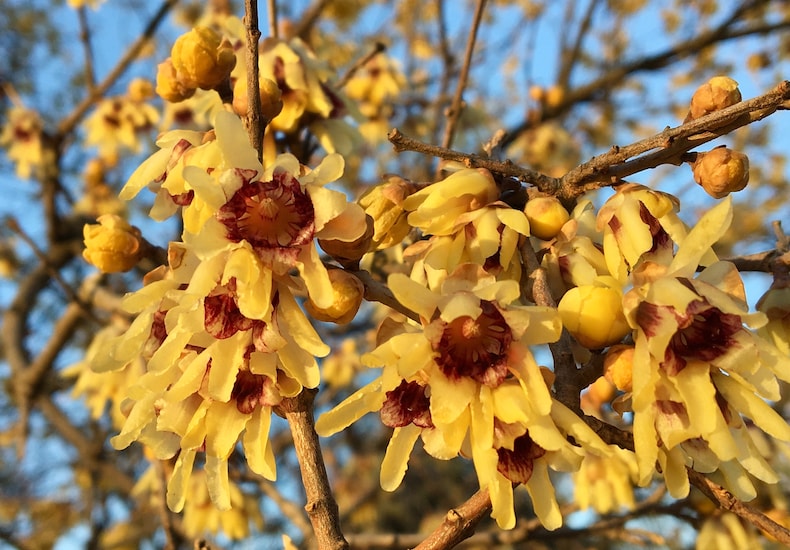
The fragrant, pendulous, yellow blooms of Chimonanthus praecox burst into life over winter
Image: Chimonanthus praecox from Thompson & Morgan
Although very much a background shrub in summer, this Chinese native makes a particularly fine display throughout winter. From December to March the unusual blooms are quite beguiling. Clusters of lemony, star-shaped flowers are carried upon bare, leafless stems. Chimonanthus praecox is most prized for its powerful sweet perfume - hence its common name of Wintersweet. Grow it against a sheltered wall to offer some protection from the coldest weather.
2. Viburnum x bodnantense 'Charles Lamont'
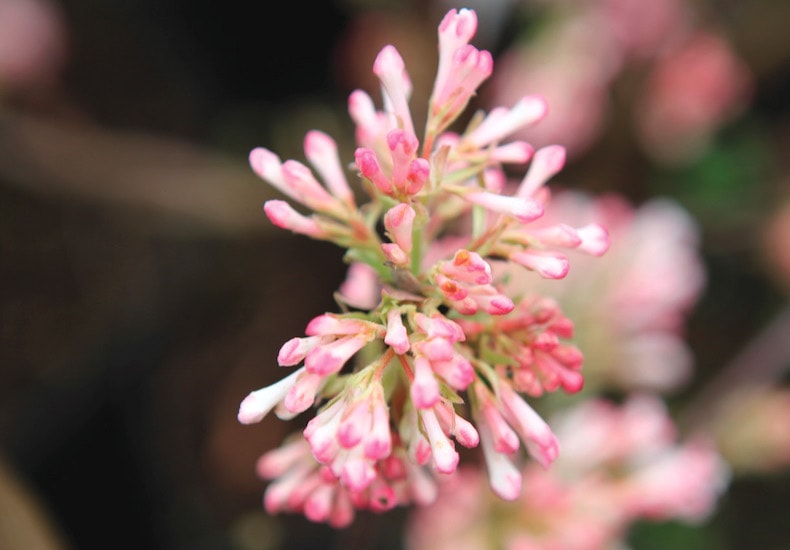
With good autumn colour and heavily scented winter flowers, 'Charles Lamont' is a striking addition
Image: Viburnum x bodnantense 'Charles Lamont' from Thompson & Morgan
Apple-blossom pink flowers crowd the naked winter stems of this resilient hardy shrub. Like many winter bloomers, it has a rich perfume that will lift your spirits on the coldest days. Viburnum x bodnantense ‘Charles Lamont’ is upright in habit, making a useful leafy backdrop for summer perennials and providing a splash of rich purple autumn foliage. It's well worth cutting a few winter stems to enjoy the scent indoors.
3. Sarcococca
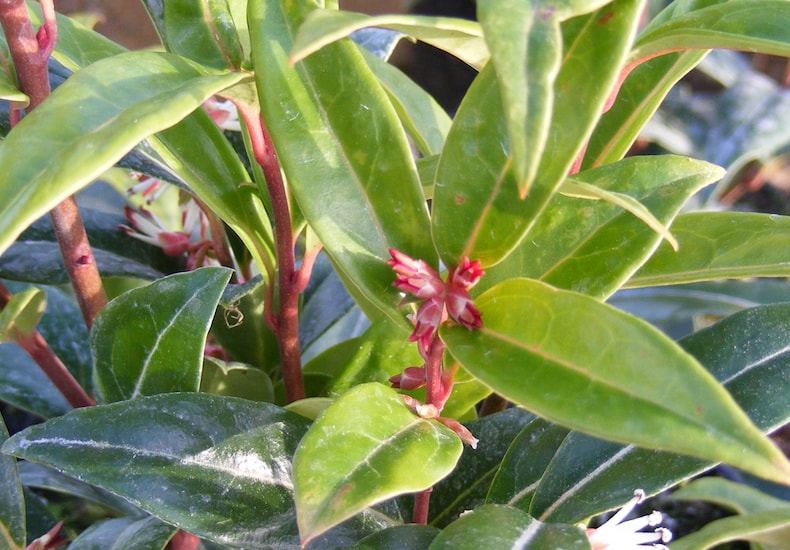
The scented flowers and and red berries of evergreen 'Winter Gem' make it a must for winter borders
Image: Sarcococca hookeriana 'Winter Gem' from Thompson & Morgan/© Darby Nursery Stock Ltd
Sarcococca is one of my favourites, giving superb value in the garden. Glossy evergreen foliage provides year round colour and structure, while the spidery winter flowers are unforgettable for their intense perfume. Sarcococca ‘Winter Gem’ is particularly fragrant. These hard working shrubs are generally neat and compact making great additions to winter containers. They appreciate a shaded spot, and form useful ground cover in woodland gardens. Versatile and reliable, they cope well in most conditions, even tolerating dry shade. A fabulous 'all rounder'!
4. Clematis cirrhosa
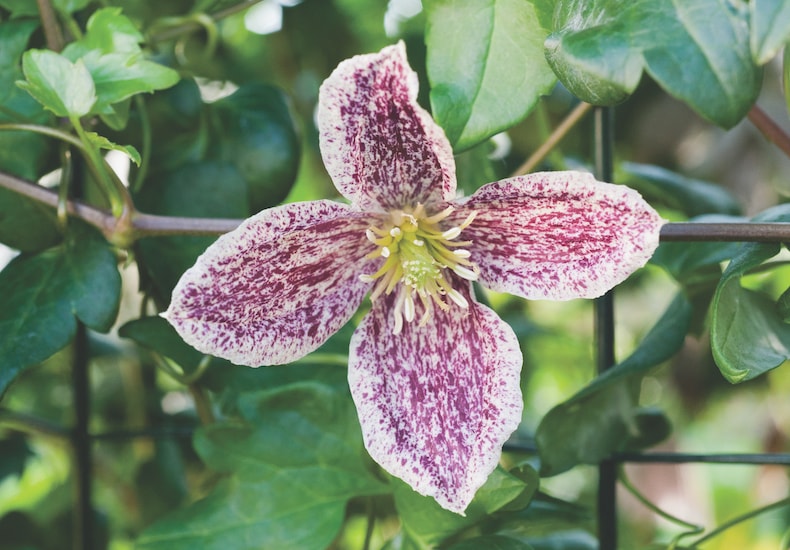
This evergreen, winter-flowering clematis has cup-shaped pinked blooms
Image: Clematis cirrhosa var. purpurascens 'Freckles' from Thompson & Morgan
Clematis cirrhosa is a winter flower species with glossy evergreen foliage. Flowering over Christmas, while most climbers are dormant, it brings much needed colour to walls and fences. Clematis cirrhosa var. purpurascens ‘Freckles’ is one of the best loved cultivars for its summery colours in the depths of winter. The nodding cream blooms have heavily speckled, pink interiors that make a showy display. If you prefer something a little more subtle then try C. cirrhosa ‘Jingle Bells’ with its white, fragrant blooms followed by attractive fluffy seedheads.
5. Cornus
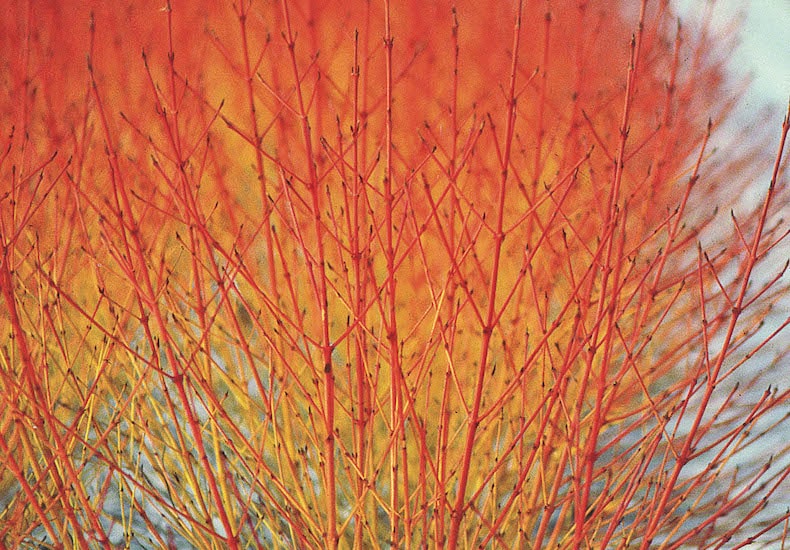
'Winter Flame's' foliage turns fiery red before revealing the spectacular orange, yellow and red stems
Image: Cornus sanguinea 'Winter Flame' from Thompson & Morgan
The fiery glow of dogwood stems, backlit by a low winter sun, is a magnificent spectacle. Throughout summer the shrubby Cornus alba, Cornus sanguinea and Cornus sericea blend quietly into the background. But as the year draws to an end, the foliage turns to fabulous autumnal shades, before winter strips the leaves to reveal a vibrant blaze of stems. Cornus sanguinea ‘Winter Flame’ is almost incandescent, while Cornus alba ‘Kesselringii’ is notable for its dark purple-black stems. Group them together in an open, sunny position for a dramatic display.
6. Prunus x subhirtella 'Autumnalis Rosea'
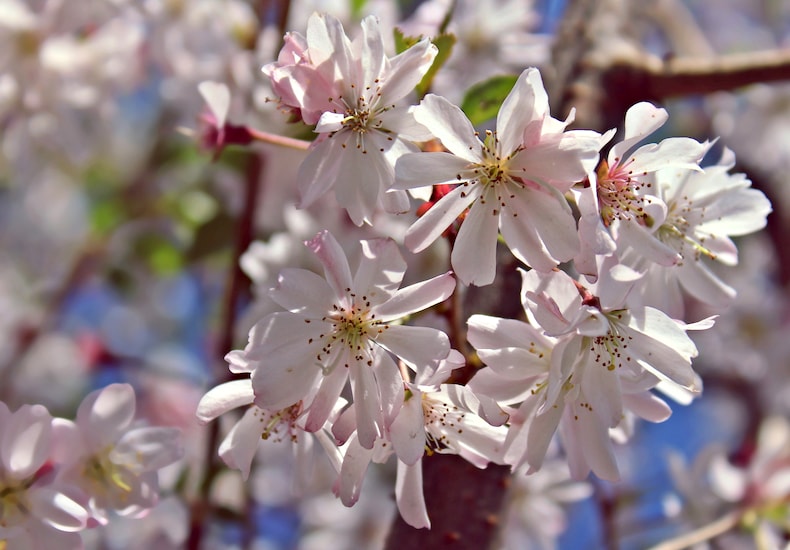
Winter Flowering Cherries are covered in pink flowers until spring
Image: Prunus x subhirtella 'Autumnalis Rosea' from Thompson & Morgan
Grown as a colourful winter hedge or small deciduous tree, Prunus x subhirtella ‘Autumnalis Rosea’ brings valuable interest to the garden on the gloomiest of days. Also called a winter flowering cherry, the buttery-gold leaves begin to fall in autumn leaving the deep pink flower buds to emerge on bare stems. These star-shaped, semi-double pale pink blooms remain from late autumn right through to early spring. The flowers are followed by small fruits that always attract attention from local birds and extend the season of interest further still.
7. Holly
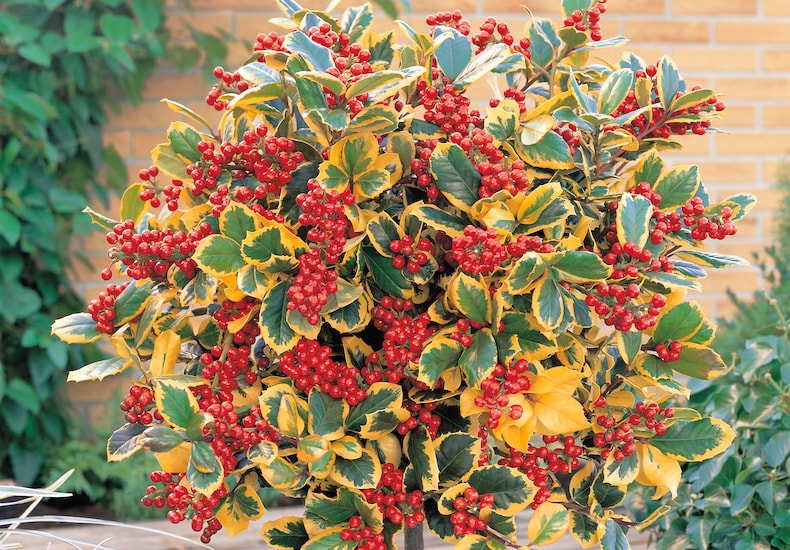
Holly 'Golden King' bears white flowers in the spring and red berries in the winter
Image: Holly 'Golden King' (Standard) from Thompson & Morgan
A list of top winter plants wouldn't be complete without the iconic Holly. Although best known for its colourful winter berries, it's important to note that only female plants will produce fruit, such as Ilex x altaclarensis ’Golden King’ (which is female, despite its confusing name). Not all Hollies are prickly either; Japanese Holly Ilex crenata ‘Dark Green’ has small, rounded, evergreen leaves much like Box, and with a similar growth habit. For my money though, you can't beat British native Ilex aquifolium!
8. Yew
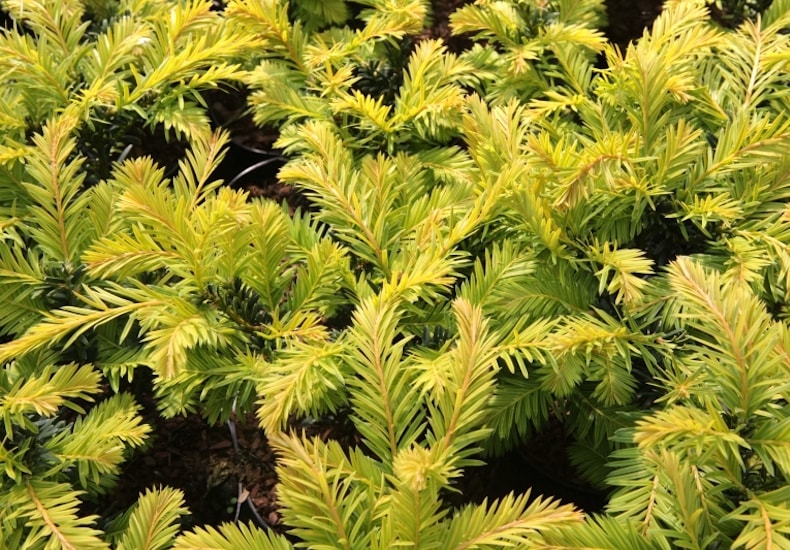
The evergreen Taxus baccata 'Kupfergold' has golden young foliage that deepens in winter
Image: Taxus baccata 'Kupfergold' from Thompson & Morgan
Yew has traditionally been the backbone of many formal gardens. The evergreen foliage provides year round colour and adds permanent structure to the skeleton of the garden. Because of its tolerance to regular clipping, Taxus baccata is famously used for creating topiary masterpieces and formal hedges. For something more colourful than traditional Yew, try Taxus baccata ‘Kupfergold’ for its golden foliage. For smaller gardens, Taxus Baccata ‘Ivory Tower’ has a fiercely upright and columnar habit that forms a striking horticultural exclamation mark!
9. Corylus avellana 'Contorta'
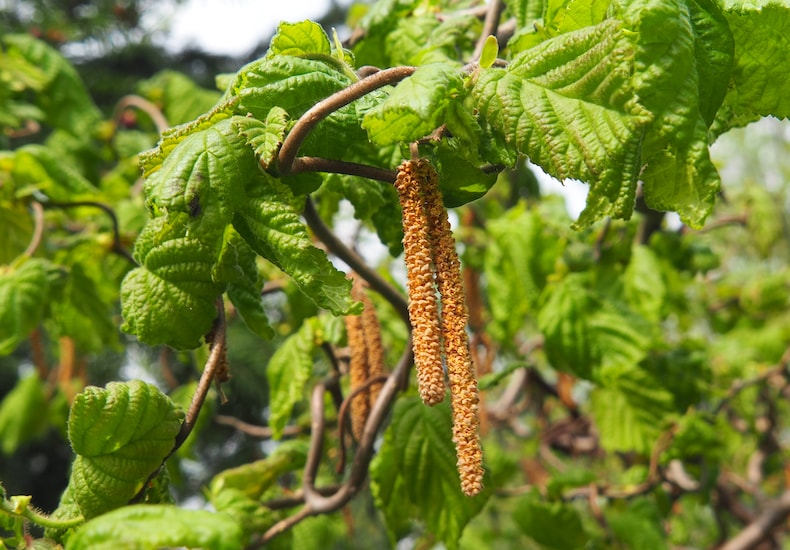
The twisted branches of Corylus avellana 'Contorta' are a superb feature in winter borders
Image: Corylus avellana 'Contorta' from Thompson & Morgan
Winter silhouettes can add great interest to the garden. The tangled, bare stems of Corylus avellana ‘Contorta’ create a profile that is endlessly interesting. Distinctive twisted branches are decorated by dangling yellow catkins by January, making a most intriguing display. The autumn foliage is good too, turning to rusted shades of gold and orange. With its sculptural outline, this charming Hazel is worthy of a prominent spot where its winter architecture can be fully appreciated.
10. Carex
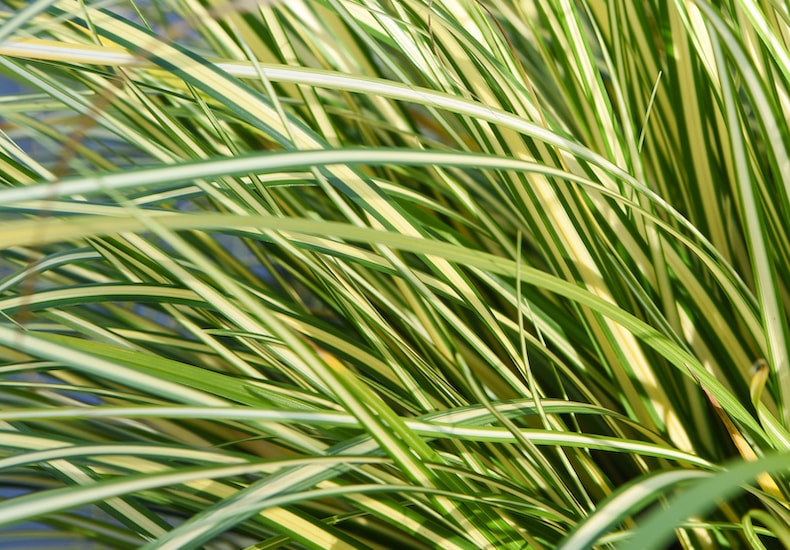
The slender, evergreen leaves of Carex oshimensis 'Evergold' are etched in green and gold
Image: Carex oshimensis 'Evergold' from Thompson & Morgan
Texture can be hard to come by in a leafless winter border. If you need to brighten up the garden on a cold, dark day then the colourful variegated foliage of grasses like Carex oshimensis ‘Evergold’ or Carex morrowii ‘Ice Dance’ are hard to beat. Carex comans ‘Bronze’ is a fabulous evergreen sedge with a naturally cascading habit that adds colour and movement to drab borders. These reliable grasses are neat and compact, making them perfect for winter patio containers. Combine them with some bright winter pansies for a long-lasting, colourful display.
See all Top 10 articles
Popular Top 10 Articles
- Top 10 Winter Vegetables
- Top 10 Potato Varieties
- Top 10 Easy-to-grow Fruit
- Top 10 Winter Bedding Plants
- Top 10 Summer Bedding Plants
- Top 10 Spring Flowering Bulbs
- Top 10 Summer Flowering Bulbs
- Top 10 Autumn/ Winter Flowering Bulbs
- Top 10 Evergreen Shrubs
- Top 10 Evergreen Shrubs for Small Gardens
- Top 10 Easy-to-grow Flowers
- Top 10 Cut Flowers
- Top 10 Hanging Basket Plants
- Top 10 Plants for Patios
- Top 10 Houseplants
- Top 10 Climbing Plants
- Top 10 Perennial Plants
- Top 10 Winter Garden Tips
- Top 10 Ornamental Grasses

Written by: Sue Sanderson
Plants and gardens have always been a big part of my life. I can remember helping my Dad to prick out seedlings, even before I could see over the top of the potting bench. As an adult, I trained at Writtle College where I received my degree, BSc. (Hons) Horticulture. After working in a specialist plantsman's nursery, and later, as a consulting arboriculturalist, I joined Thompson & Morgan in 2008. Initially looking after the grounds and coordinating the plant trials, I now support the web team offering horticultural advice online.Sign Up For Exclusive Special Offers




© 2025 Thompson & Morgan. All rights reserved. A division of Branded Garden Products Limited.



